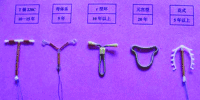Comparing Chinese Medicine And Ayurveda: Ancient Healing Systems From East And West

Chinese Medicine and Ayurveda are two ancient healing systems that originated in the East and the West, respectively. These systems have been practiced for thousands of years and offer unique approaches to health and wellness.
While Chinese Medicine hails from China, Ayurveda is rooted in India. Despite their geographical differences, both systems share common principles and philosophies that aim to promote balance and harmony in the body.
Chinese Medicine is based on the concept of Qi, the vital energy that flows through the body’s meridians, while Ayurveda focuses on the balance of the three doshas – Vata, Pitta, and Kapha.
Diagnostic methods in Chinese Medicine include pulse diagnosis and tongue examination, whereas Ayurveda emphasizes observation of physical characteristics and examination of the pulse, tongue, and other bodily functions.
Treatment modalities in both systems range from herbal remedies and acupuncture in Chinese Medicine to herbal preparations and specialized diets in Ayurveda.
The philosophy of health and wellness in Chinese Medicine and Ayurveda revolves around the idea of maintaining balance and preventing disease through lifestyle modifications, dietary changes, and mind-body practices.
Understanding the similarities and differences between Chinese Medicine and Ayurveda can provide valuable insights into ancient healing systems and their integration into modern healthcare. This article aims to explore and compare these two systems, shedding light on their origins, principles, diagnostic methods, treatment modalities, and their relevance in contemporary healthcare practices.
Origins of Chinese Medicine and Ayurveda
The origins of Chinese Medicine and Ayurveda can be traced back thousands of years, instilling a sense of awe and reverence for the wisdom and knowledge held within these ancient healing systems.
Chinese Medicine, also known as Traditional Chinese Medicine (TCM), originated in ancient China around 5,000 years ago. It is based on the belief that the body is a microcosm of the universe and that the balance of Yin and Yang energy is essential for maintaining health.
Ayurveda, on the other hand, originated in the Indian subcontinent around 5,000 years ago. It is a holistic healing system that focuses on achieving balance between mind, body, and spirit.
Both Chinese Medicine and Ayurveda have evolved over time, incorporating various philosophical, spiritual, and medical principles to provide comprehensive approaches to health and well-being.
Principles of Chinese Medicine and Ayurveda
Chinese Medicine and Ayurveda are ancient healing systems that share a common goal of restoring balance to the body.
Chinese Medicine focuses on the concept of qi, which is the vital energy that flows through the body. The principles of Chinese Medicine revolve around balancing and harmonizing the flow of qi.
On the other hand, Ayurveda places emphasis on balancing the three doshas, which are the fundamental energies that govern all bodily functions.
Both systems aim to achieve optimal health by restoring balance to the body, albeit through different approaches.
Chinese Medicine’s focus on balancing qi
Balancing qi, a fundamental principle of Chinese Medicine, involves harmonizing the vital life force within the body to create a harmonious flow of energy. Qi, often translated as “energy” or “vital force,” is believed to circulate through meridians or energy pathways within the body. Chinese Medicine emphasizes the importance of maintaining a balanced and unobstructed flow of qi for optimal health and well-being. According to this ancient healing system, imbalances in qi can lead to various physical and mental ailments. Practitioners of Chinese Medicine use various techniques such as acupuncture, herbal medicine, and dietary adjustments to restore balance and enhance the flow of qi. By doing so, it is believed that overall health and vitality can be achieved.
| Benefits of Balanced Qi | Effects of Imbalanced Qi |
|---|---|
| Increased energy levels | Fatigue |
| Improved digestion | Digestive disorders |
| Enhanced immune function | Weakened immune system |
| Mental clarity | Brain fog |
| Emotional well-being | Anxiety and depression |
Ayurveda’s emphasis on balancing doshas
Ayurveda, an ancient holistic healing tradition, places significant importance on achieving a state of balance by harmonizing the doshas, or energies, within the body. This system views the human body as an interconnected network of energies, and believes that imbalances in these energies can lead to physical and mental ailments.
Ayurveda identifies three primary doshas: Vata, Pitta, and Kapha. Each dosha represents a combination of elements and qualities, and individuals are believed to have a unique dosha composition.
Balancing the doshas is seen as essential for maintaining good health and preventing diseases. Ayurvedic practitioners use various methods, including dietary modifications, herbal remedies, lifestyle changes, and therapies like massage and meditation, to restore harmony among the doshas.
By addressing imbalances and promoting equilibrium, Ayurveda aims to support overall well-being and enhance the body’s natural healing abilities.
Diagnostic Methods in Chinese Medicine and Ayurveda
Diagnostic methods in both Chinese medicine and Ayurveda involve the careful observation of physical, mental, and emotional symptoms to determine the underlying imbalances or disharmonies within the body.
In Chinese medicine, diagnosis is based on the principles of Yin and Yang, as well as the flow of Qi, or vital energy, through meridians. Practitioners use techniques such as pulse diagnosis, tongue examination, and palpation to assess the overall balance and flow of Qi in the body.
In Ayurveda, diagnosis is based on the concept of doshas and the balance between them. Practitioners use methods such as pulse diagnosis, observation of the tongue, and examination of the eyes, nails, and skin to identify the doshic imbalances.
Both systems emphasize the importance of understanding the root cause of the imbalance in order to provide appropriate treatment and restore harmony to the body.
Treatment Modalities in Chinese Medicine and Ayurveda
This paragraph will discuss the treatment modalities used in Chinese Medicine and Ayurveda.
Chinese Medicine utilizes acupuncture and herbal medicine as key treatment methods. Acupuncture involves the insertion of thin needles into specific points on the body to restore balance and promote healing. Herbal medicine, on the other hand, involves the use of specific plants and their extracts to address various health concerns.
In contrast, Ayurveda focuses on dietary changes and herbal remedies as its primary treatment modalities. Dietary changes aim to balance the body’s doshas, or energy forces, through the consumption of specific foods. Herbal remedies, similar to Chinese Medicine, also play a significant role in Ayurveda’s treatment approach.
Chinese Medicine’s use of acupuncture and herbal medicine
Acupuncture has been practiced in Chinese Medicine for thousands of years, with thin needles inserted into specific points on the body to restore balance and promote healing. This ancient healing technique is based on the concept of Qi, the vital energy that flows through the body along meridians.
The use of acupuncture in Chinese Medicine offers several benefits:
- Regulation of Qi flow: Acupuncture helps to regulate the flow of Qi, which can become blocked or imbalanced due to various factors. By inserting needles into specific points, acupuncture stimulates the movement of Qi, restoring balance and promoting overall well-being.
- Pain relief: Acupuncture has been found to be effective in managing pain, both acute and chronic. It is believed that the insertion of needles triggers the release of endorphins, natural pain-relieving substances, and stimulates the body’s self-healing mechanisms.
- Holistic approach: Chinese Medicine views the body as a whole, interconnected system. Acupuncture is used to address not only physical symptoms but also emotional and mental imbalances, providing a holistic approach to healing.
Ayurveda’s use of dietary changes and herbal remedies
Dietary changes and the use of herbal remedies are integral components of Ayurvedic practices, offering a holistic approach to healing and promoting overall well-being.
Ayurveda emphasizes the importance of maintaining a balanced diet that suits an individual’s constitution or dosha. This involves consuming fresh, whole foods that are compatible with one’s unique body type. Ayurvedic dietary recommendations also suggest avoiding processed foods, excessive amounts of caffeine, and refined sugars, as they are believed to disrupt the body’s natural equilibrium.
Additionally, Ayurveda utilizes a wide range of herbal remedies to address specific health issues. These remedies are derived from various plants, roots, and herbs, and are carefully selected based on their therapeutic properties. Ayurvedic practitioners prescribe herbal remedies to correct imbalances in the body and promote optimal health.
Through dietary changes and the use of herbal remedies, Ayurveda aims to restore balance and harmony within the body, ultimately supporting overall well-being.
Philosophy of Health and Wellness in Chinese Medicine and Ayurveda
The philosophies of health and wellness in Chinese Medicine and Ayurveda offer holistic approaches to understanding and addressing the interconnectedness between the mind, body, and spirit. Both systems emphasize the importance of maintaining balance and harmony within the body to achieve optimal health.
In Chinese Medicine, health is viewed as a state of balance between Yin and Yang energies, as well as the harmonious flow of Qi (pronounced ‘chee’) or vital energy. Traditional Chinese Medicine (TCM) practitioners use various techniques such as acupuncture, herbal medicine, and Tai Chi to restore balance and promote wellness.
In Ayurveda, health is seen as a balance between the three doshas: Vata, Pitta, and Kapha. Each person has a unique combination of these doshas, and imbalances can lead to illness. Ayurvedic practices include dietary changes, herbal remedies, yoga, and meditation to restore balance and promote well-being.
Both Chinese Medicine and Ayurveda recognize the importance of preventative care, focusing on maintaining a healthy lifestyle and addressing imbalances before they manifest as illness. By considering the interconnectedness of the mind, body, and spirit, these ancient healing systems provide comprehensive approaches to promoting health and wellness.
- Chinese Medicine emphasizes the balance between Yin and Yang energies
- Ayurveda focuses on balancing the three doshas: Vata, Pitta, and Kapha
Understanding Disease in Chinese Medicine and Ayurveda
Understanding disease in Chinese Medicine and Ayurveda involves recognizing the underlying imbalances in the body’s energies or doshas that contribute to illness.
In Chinese Medicine, disease is believed to occur when there is an imbalance or blockage in the flow of Qi, the vital energy that runs through the body’s meridians. This imbalance can be caused by various factors, such as emotional stress, dietary imbalances, or external pathogens.
Ayurveda, on the other hand, views disease as a result of imbalances in the three doshas – Vata, Pitta, and Kapha. These doshas govern different functions in the body and can be thrown off balance by factors such as poor digestion, improper diet, or environmental influences.
Both systems emphasize the importance of restoring balance and harmony in the body’s energies to promote healing and prevent disease.
Integration of Chinese Medicine and Ayurveda in Modern Healthcare
Integration of Chinese Medicine and Ayurveda in modern healthcare has the potential to revolutionize treatment approaches by harnessing the wisdom of ancient healing traditions to address the complexities of today’s health challenges.
Both Chinese Medicine and Ayurveda offer holistic approaches that focus on treating the root cause of disease rather than just the symptoms.
By integrating these two systems, healthcare practitioners can tap into a wider array of diagnostic tools and treatment modalities, allowing for a more personalized and comprehensive approach to patient care.
For example, Chinese Medicine’s emphasis on balancing the body’s energy, or qi, can complement Ayurveda’s focus on balancing the doshas, or individual constitutions.
This integration can lead to a more nuanced understanding of health and disease, and ultimately result in more effective and sustainable treatment outcomes.
However, the integration of these two systems requires further research and collaboration between practitioners from both traditions to ensure safe and effective implementation in modern healthcare settings.
Frequently Asked Questions
What are the potential side effects or risks associated with Chinese Medicine and Ayurveda treatments?
Potential side effects and risks associated with Chinese medicine and Ayurveda treatments include allergic reactions, drug interactions, contamination, misdiagnosis, and improper use of herbs or substances. It is essential to consult a trained practitioner and exercise caution when using these traditional healing systems.
Are Chinese Medicine and Ayurveda recognized and regulated by government health authorities?
Chinese medicine and Ayurveda are recognized and regulated by government health authorities in their respective countries of origin, such as the State Administration of Traditional Chinese Medicine in China and the Department of Ayurveda, Yoga and Naturopathy, Unani, Siddha and Homoeopathy in India.
How long does it typically take to see results from Chinese Medicine and Ayurveda treatments?
The time it takes to see results from Chinese medicine and Ayurveda treatments can vary depending on the individual and the nature of the condition being treated. Typically, it may take several weeks or even months to experience noticeable improvements in symptoms.
Can Chinese Medicine and Ayurveda be used as a primary form of healthcare or should they be used in conjunction with Western medicine?
Chinese medicine and Ayurveda can be used as primary forms of healthcare, but it is advisable to use them in conjunction with Western medicine to ensure comprehensive and integrated healthcare that addresses both the physical and holistic aspects of an individual’s health.
Are there any specific dietary or lifestyle recommendations that should be followed alongside Chinese Medicine and Ayurveda treatments?
Specific dietary and lifestyle recommendations should be followed alongside Chinese medicine and Ayurveda treatments. These recommendations are aimed at promoting balance, harmony, and optimal health, and may include dietary modifications, exercise, stress reduction, and daily routines tailored to individual needs.








